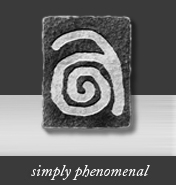On Par with Hunter Thompson and Jack Kerouac
May 10, 2013
 The reviews of our expanded reprint of John A. Keel’s first book, JADOO, are in, and they contain nothing but superlatives and flattering comparisons to some very well known literary figures, past and present. First up we have Nick Redfern, writing in Mysterious Universe: “What is Jadoo about? Well, if I was to say to you: ‘Try and imagine a story that is part-Raiders of the Lost Ark, part-Kerouac, part-Bukowski, part-The Da Vinci Code, and part-Hemingway and you have Jadoo,’ maybe that would help…If you want to learn about what the man who made Mothman famous (and who, in turn, was made famous by it) was doing long before Point Pleasant, West Virginia, dragged him, magnet-like, into its creepy confines, then buy and read Jadoo.” Next up is Micah Hanks writing in the Gralien Report; in Jadoo, he says, we see Keel, “the skeptical journalist as he meanders the fringes of civilization…Jadoo chases Keel’s life of mystery and strangeness back to it’s humble beginnings, and shares with us all the tragedy, humor, hardships, and enigmatic wonder of a young adventurer whose notes on life in other parts of the world might challenge the finest American journalism of his day, easily on par with the likes of Hunter Thompson and Jack Kerouac.” Wow.
The reviews of our expanded reprint of John A. Keel’s first book, JADOO, are in, and they contain nothing but superlatives and flattering comparisons to some very well known literary figures, past and present. First up we have Nick Redfern, writing in Mysterious Universe: “What is Jadoo about? Well, if I was to say to you: ‘Try and imagine a story that is part-Raiders of the Lost Ark, part-Kerouac, part-Bukowski, part-The Da Vinci Code, and part-Hemingway and you have Jadoo,’ maybe that would help…If you want to learn about what the man who made Mothman famous (and who, in turn, was made famous by it) was doing long before Point Pleasant, West Virginia, dragged him, magnet-like, into its creepy confines, then buy and read Jadoo.” Next up is Micah Hanks writing in the Gralien Report; in Jadoo, he says, we see Keel, “the skeptical journalist as he meanders the fringes of civilization…Jadoo chases Keel’s life of mystery and strangeness back to it’s humble beginnings, and shares with us all the tragedy, humor, hardships, and enigmatic wonder of a young adventurer whose notes on life in other parts of the world might challenge the finest American journalism of his day, easily on par with the likes of Hunter Thompson and Jack Kerouac.” Wow.
Now Available: Jadoo
January 4, 2013
 John A. Keel died on July 3, 2009, but his works survive. With the permission of his estate, we have just reprinted his first book, JADOO, which appeared in 1957. Whether or not it is “the greatest book ever written on the black magic of the Orient,” as it’s been called, we can say for certain that there will never again be another book like it. Jadoo, a Hindi word meaning “Black Magic,” captures a world that is now lost to us—the strange, dark, mysterious world that was once called the “Orient.” It is the story of a real-life Indiana Jones of the 1950s named John Keel, who went on to write The Mothman Prophecies, which was made into a movie starring Richard Gere in 2002. This revised edition of JADOO contains material that the original publisher deleted from the book, specifically a warm and melancholy chapter on Keel’s love life in Egypt. In this new edition you will also find a review of the book written by Keel himself under a pseudonym, a few photographs from his files, a sample of his travel notes, and a proposal for a follow-up book to JADOO. If you read the book long, long ago, it’s time to read it again. The book has aged very, very well.
John A. Keel died on July 3, 2009, but his works survive. With the permission of his estate, we have just reprinted his first book, JADOO, which appeared in 1957. Whether or not it is “the greatest book ever written on the black magic of the Orient,” as it’s been called, we can say for certain that there will never again be another book like it. Jadoo, a Hindi word meaning “Black Magic,” captures a world that is now lost to us—the strange, dark, mysterious world that was once called the “Orient.” It is the story of a real-life Indiana Jones of the 1950s named John Keel, who went on to write The Mothman Prophecies, which was made into a movie starring Richard Gere in 2002. This revised edition of JADOO contains material that the original publisher deleted from the book, specifically a warm and melancholy chapter on Keel’s love life in Egypt. In this new edition you will also find a review of the book written by Keel himself under a pseudonym, a few photographs from his files, a sample of his travel notes, and a proposal for a follow-up book to JADOO. If you read the book long, long ago, it’s time to read it again. The book has aged very, very well.









